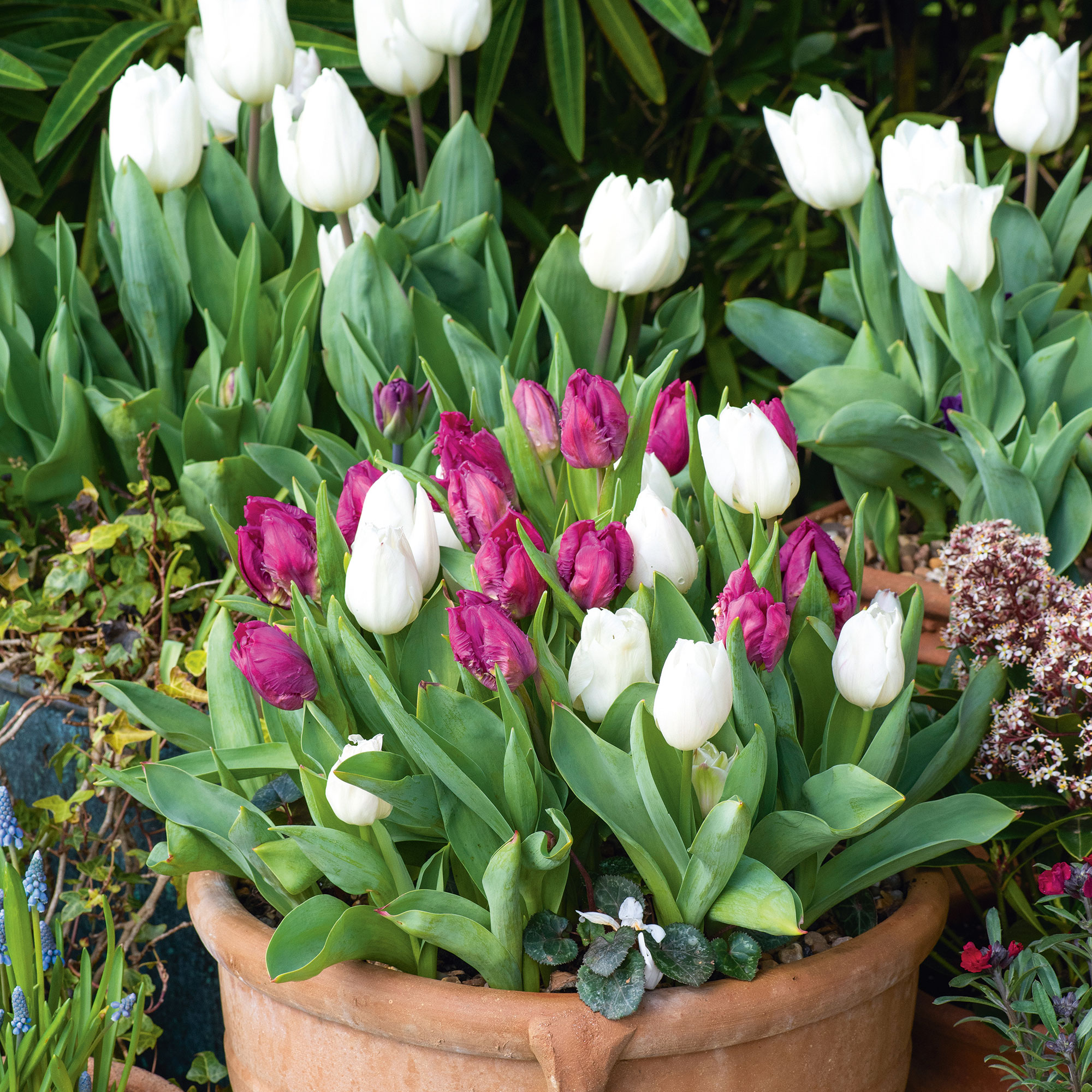
It’s a sure sign that spring has sprung when tulips show off their cup-shaped flowers. And while tulips are some of the earliest spring bulbs to flower, this also means that they’re some of the earliest spring bulbs to droop. So, what do you do with tulips after flowering?
When you imagine your dream spring garden idea, there’s a high chance that tulips make an appearance. These spring flowers are not only beautiful, but they’re also very low-maintenance. As long as you plant tulip bulbs at the right time and give them the perfect space to grow, they should return year after year.
But when tulip flowers are spent and the foliage looks messy, you may feel inclined to stretch your green fingers and tidy them up. However, experts are urging you to have a little patience and follow these rules if you want guaranteed blooms next year.
What to do with tulips after flowering
Daffodils and tulips are two of the most popular spring blooms. But just as you should know what to do with daffodils after flowering, you could also know what to do with tulips after flowering. After all, the same rules apply.

Steve Chilton, garden expert at LeisureBench, explains, ‘Just like with daffodils, it's really important to deadhead the flowers as soon as tulips have finished flowering. This will help the plant conserve energy.’
So, when you spot that your tulip flowers have faltered and faded, simply snap off the spent flowers between your thumb. While you’re doing this, you should also snap off the seed pod and add them both to your compost heap.
‘This ensures that energy is returned to the bulb and stops them from wasting energy on producing seeds,’ says Craig Morley, a gardening expert from Budget Seeds.
But while you may feel inclined to cut back the green foliage after deadheading, this is the worst thing you could do for your tulips. Cutting back the foliage too early will restrict the plant’s ability to gather food and nutrients, resulting in smaller, less vibrant tulips next year.

‘Just like daffodils, you should wait until the foliage has died back and turned yellow before you do anything with it. When the leaves are green, this means that they are still gathering energy that’s then stored in the bulb for next year’s blooms,’ explains Steve.
That doesn’t mean that you should simply ignore this foliage, though. To allow them to gather as much energy as possible during this crucial time, you should continue to fertilise them (with a potassium-rich liquid fertiliser, such as tomato feed) and ensure they’re not drying out.
Steve says, ‘I don't recommend watering them too much, as tulips can be susceptible to rot if the soil around them continues to be very wet after flowering. Unless it's particularly dry weather-wise, you shouldn't need to water them.’
Typically, it should take around six weeks for this foliage to turn yellow. At this point, you can cut the foliage back to ground level using clean secateurs and turn your attention to the bulbs.
If you have planted your tulips in your garden borders or in raised beds, you can simply leave the bulbs where they are to re-flower next year. Alternatively, you could lift the bulbs and store them until it’s time to plant them out again.

‘To do this, all you have to do is lift out the bulb with a small gardening fork once you've removed all the dead foliage. I recommend removing the stem, as well as the first outer layer of the bulb (this is normally a bit crispy). You should then store them in a cool, dry place until next season. This could be in a dry paper bag, in a cupboard, or hessian bag,’ adds Steve.
However, the rules are a little different if you have grown tulips in pots. Craig says, ‘If your tulips were grown in containers, it is unlikely that these will flower again as they were grown in a stressed environment. It is best to dispose of the bulbs and replant fresh ones in autumn for flowers in spring.’
What you’ll need
FAQs
Should tulip bulbs be dug up after flowering?
If you have planted tulips in the ground, you can choose either to leave the tulip bulbs where they are or pull them up and keep them safe until next year. Leaving them in the ground is the easiest and most efficient option to ensure your tulips come back year after year.
However, it’s best to dig up your tulip bulbs if you have grown them in pots. It’s unlikely that tulips grown in pots will flower again, so pulling them out and replacing them with fresh bulbs is your best bet.
Can I leave tulip bulbs in pots after flowering?
Although there’s a slim chance that tulips will re-flower next year when grown in pots, it’s often easier to remove tulip bulbs from pots after flowering. Of course, you could leave it to chance and hope that you’re lucky, but if you want guaranteed tulip blooms in pots next year, you should pull the bulbs up and replace them.
Do tulips need to be cut down after blooming?
After flowering, you should deadhead tulips and make sure you snap off the seed pod, too. You should then wait around six weeks (until the foliage turns yellow) to cut back the foliage, as this stage is essential for next year’s growth.
When the foliage has turned yellow, you can then cut down the leaves and either choose to pull up the bulbs or leave them in the ground.
If you follow these rules, your tulip crop will be even better next year.







